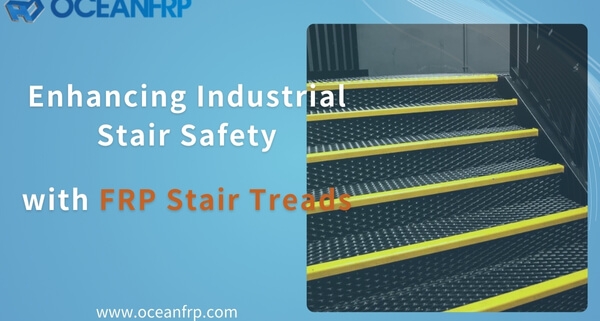Enhancing Industrial Stair Safety with FRP Stair Treads
Stair safety in industrial settings is paramount. Each day, an individual suffers from a slip, trip, or fall on work stairs. Shockingly, annually, there are 12,000 stairway accident deaths and over 1 million injuries due to stair falls. Introducing FRP stair treads, a revolutionary solution enhancing safety in industrial environments. These durable and slip-resistant treads offer unparalleled protection. This blog delves into the benefits of FRP staircase solutions and their applications in various industries, including the use of FRP stair covers (or FRP stair tread covers) for added safety and durability.
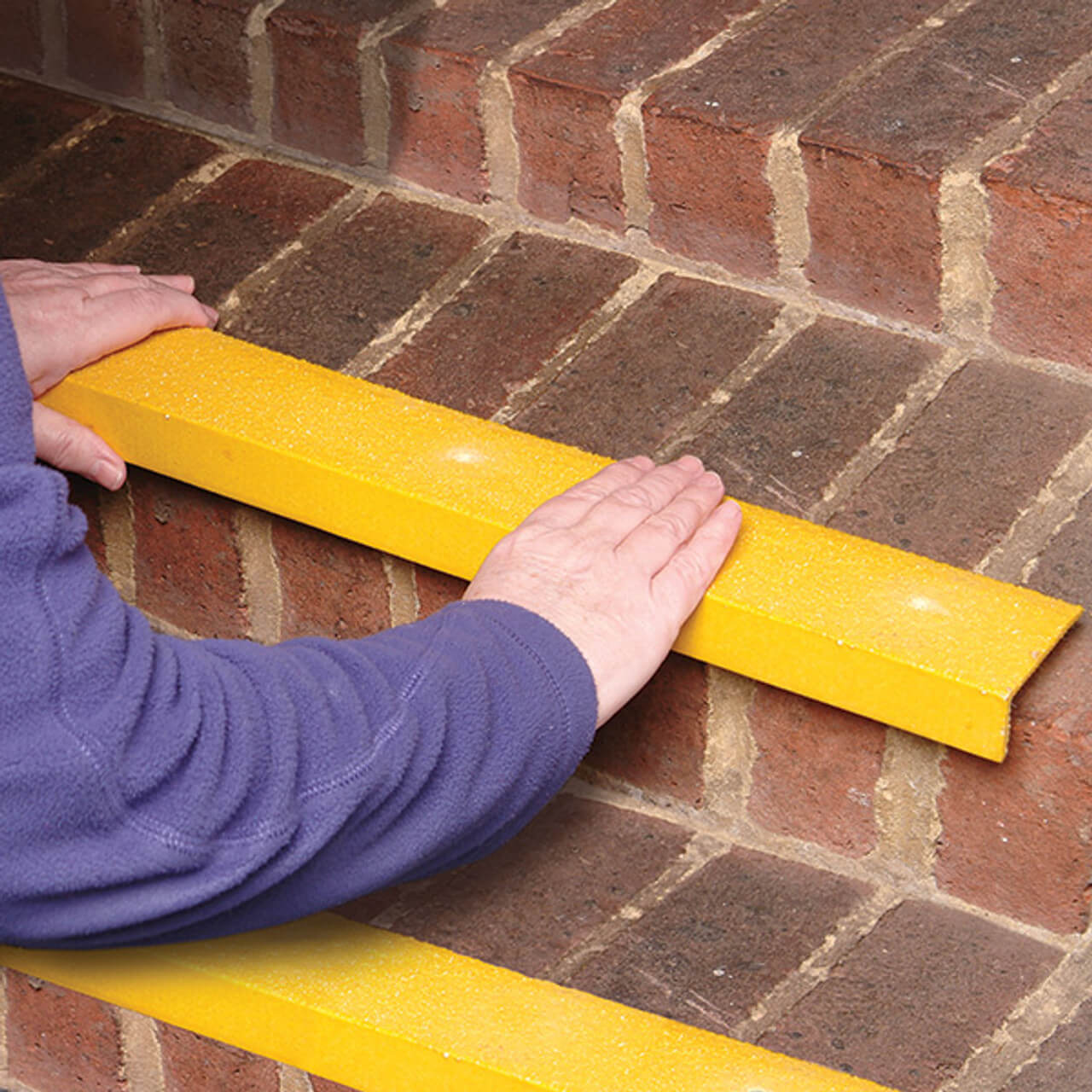
Understanding FRP Stair Treads
When considering FRP stair treads, it’s essential to comprehend their structure and production process. These treads, crafted from molded FRP, offer exceptional durability and value. The manufacturing process involves starting with a large 120″ panel that can be easily tailored to your specific stair width requirements, ensuring adaptability and ease of installation.
What are FRP Stair Treads?
Composition and Materials
- Molded FRP for durability
- Heavy-duty nosing section for added strength
- Yellow marking for enhanced safety
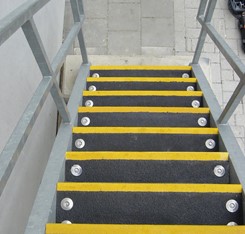
Manufacturing Process
- Initiate with a large 120″ panel
- Cut down to required stair width
- Ensure flexibility in installation
Key Features of FRP Stair Treads
Durability and Strength
- Resistant to extreme use
- Provides additional strength at the leading edge
Corrosion Resistance
- Anti-corrosive properties ensure longevity
Slip Resistance
- Gritted top surface for all-weather grip
Lightweight and Easy Installation
- Lightweight design for easy handling
- Simple installation process for convenience
Comparison with Traditional Materials
When comparing FRP stair treads with traditional materials like steel, wood, and concrete, the advantages become evident:
Steel
- Heavier than FRP
- Prone to corrosion over time
Wood
- Susceptible to rotting and wear
- Requires frequent maintenance
Concrete
- More challenging to install than FRP
- Prone to cracking under pressure
Benefits of Using FRP Stair Treads in Industrial Settings
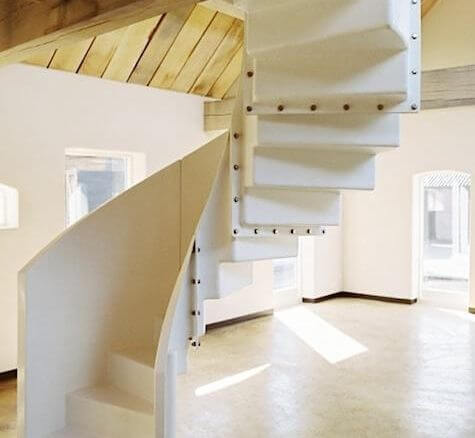
Enhanced Safety
Slip-Resistant Surface
- FRP stair treads offer a slip-resistant surface that ensures safety in various environments. The anti-slip properties provide excellent grip, especially in wet conditions, reducing the risk of accidents.
High Visibility
- For added safety measures, FRP stair treads are designed with high visibility features. The contrasting colors and yellow markings enhance visibility, making them easily noticeable even in low-light settings.
Solid Safety Nosing
- The solid safety nosing on FRP stair treads provides additional protection by reinforcing the leading edge of the steps. This feature ensures durability and strength, crucial for industrial applications.
Cost-Effectiveness
Long-Term Savings
- Opting for FRP stair treads translates to long-term savings due to their durability and low maintenance requirements. These treads are resistant to wear and corrosion, minimizing replacement costs over time.
Low Maintenance
- FRP stair treads are virtually maintenance-free, making them a cost-effective solution for industrial settings. With minimal upkeep needed, these treads offer a hassle-free option that saves both time and money.
Environmental Benefits
Sustainability
- Choosing FRP stair treads aligns with sustainable practices as they are made from Fiberglass Reinforced Plastic. These eco-friendly materials contribute to environmental conservation efforts by reducing the consumption of natural resources.
Recyclability
- An essential aspect of FRP stair treads is their recyclability. At the end of their lifecycle, these treads can be recycled and repurposed, promoting a circular economy and minimizing waste generation.
Applications of FRP Stair Treads
Common Industrial Uses
Factories
- FRP stair treads find extensive applications in factories, providing a durable and safe solution for industrial staircases. The corrosion-resistant properties of FRP make them ideal for high-traffic areas within factory settings.
Warehouses
- Within warehouses, the use of FRP stair treads ensures employee safety while navigating different levels. Their lightweight nature facilitates easy installation, enhancing the overall safety protocols within warehouse environments.
Chemical Plants
- Chemical plants benefit significantly from the chemical-resistant nature of FRP stair treads. These treads offer a reliable solution for stairs in areas where exposure to various chemicals is common, ensuring long-lasting durability.
Water Treatment Facilities
- In water treatment facilities, where moisture is prevalent, the anti-slip surface of FRP stair treads provides essential safety measures. These treads offer a secure footing for workers in wet conditions, reducing the risk of accidents.
Marine Environments
- FRP stair treads are well-suited for marine environments due to their corrosion-resistant properties. Whether on docks or ships, these treads provide a safe walking surface that withstands harsh marine conditions effectively.
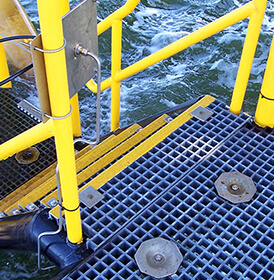
Installation and Maintenance of FRP Stair Treads
Installation Process
Preparation
To begin the installation process of FRP stair treads, ensure that the designated area is clean and free from any debris. This step is crucial to guarantee a smooth installation without any hindrances.
Tools and Materials Needed
When installing FRP stair treads, gather essential tools such as a measuring tape, drill, screws, and safety equipment like gloves and goggles. These tools are necessary for a safe and efficient installation process.
Step-by-Step Guide
- Measure the dimensions of the stairs accurately to determine the required size of FRP stair treads.
- Position each tread carefully on the stairs, ensuring they align correctly with the edges.
- Secure the treads in place using screws or adhesive, depending on the installation method chosen.
- Double-check each tread to confirm they are firmly attached and provide a secure footing for users.
Maintenance Tips
Regular Inspections
Regular inspections of FRP stair treads are essential to identify any signs of wear or damage promptly. Inspect each tread for cracks, loose fittings, or slippery surfaces that may compromise safety.
Cleaning Procedures
Maintaining cleanliness is key to prolonging the lifespan of FRP stair treads. Regularly clean the treads using a mild detergent and water solution to remove dirt and grime effectively. Avoid using harsh chemicals that could damage the surface.
Repair and Replacement
If any FRP stair tread shows significant wear or damage during inspections, prioritize immediate repair or replacement. Addressing issues promptly ensures continued safety for individuals using the stairs regularly.
Recapping the advantages of FRP stair treads, these durable solutions offer unparalleled safety and longevity in industrial settings. By enhancing visibility, ensuring slip resistance, and providing solid nosing, FRP stair treads prioritize user safety. Embracing these innovative products not only guarantees cost-effectiveness but also contributes to environmental sustainability through recyclable materials. Elevate your industrial stair safety with OCEANFRP’s FRP Stair Tread for a reliable and long-lasting solution.

